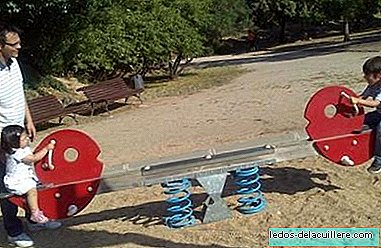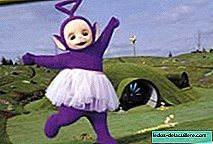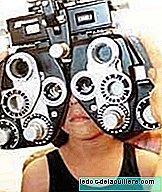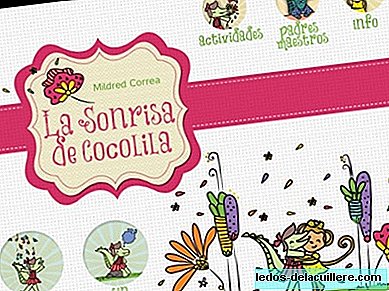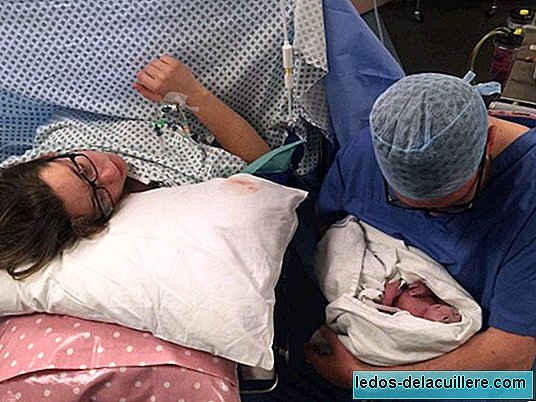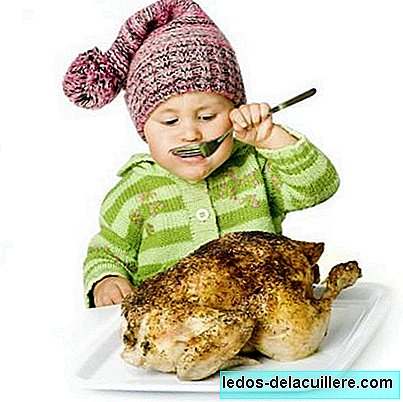
The quantity and quality of the food that children consume is an issue that worries families, and it is logical since food is a fundamental pillar for a healthy life. When complementary feeding begins and a few years later a question that may arise is Does my child take too much protein?
Will I be giving him the right foods? Where does excess protein reside? What can I do to make my child eat healthy? Many issues are common sense, such as the issue of quantities or inappropriate foods. Although we know that sometimes excesses are committed ...
In the case of proteins, our children usually take more than recommended. How to know if this is our case? Let's see what are the recommended daily amounts, the foods that contain more protein and based on that we can get an idea and modify the habits if necessary.
According to FAO and WHO, these are the general daily protein recommendations, for children older than one year, although it is necessary to take into account variations regarding the context or physical activity that each child performs ...
Children from one to two years should take about 1.6 grams of protein for every kilo of weight (about 20 grams per day for a weight of 13 kilos).
For children from two to five years of age, 1.5 grams of protein is recommended per kilo (about 30 grams per day for a weight of 20 kilos).
From the age of five, 1.3 grams.

Where are there more proteins?
Knowing where the largest protein intake is, we can control its consumption. Although all foods contain some amount, the richest in protein are meat, fish, eggs, milk and its derivatives, legumes and nuts.
Keep in mind that the recommended proteins should be 65% of animal origin and 35% of plant origin, so you have to compensate the first, restrict eggs, meat and fish and also offer legumes or cereals with high protein content such as Lentils, soy, quinoa.
The meat It contains approximately 60% water, 20% fat and another 20% protein. This means that, with 100 grams of meat, we are taking 20 grams of protein. That is why it is not recommended to give children twice a day meat, because with the rest of the food the recommended daily amount would be easily exceeded.
The same happens with fish, high protein (cod, salmon, monkfish ... about 20%; in this sense, hake has less, 15%).
The egg It has 6-7 grams of protein per unit (egg proteins are concentrated in the white). Keep in mind that if you make cheese tortillas or other combinations, the amount of protein increases. Because of this large amount of protein content, it is recommended that young children do not take more than two or three eggs a week.
Stuffed loin or serrano ham contain many proteins (approximately 40% and 30%).
The cheeses between 30% and 20% are several: manchego, emmental, gruyere, roquefort, cabrales (the cured manchego is the one with the most proteins).
Legumes such as soybeans (37%) or lentils (23%).
Quinoa has 23% protein content.
100 grams of peanut or peanut contain 27 grams of protein (almonds, 20).
The bread contains approximately 10% protein.
On the other hand, cow's milk that children can take from one year of age has an approximate content of 3.5% protein, just like yogurts. We must point out that powdered milks contain many more proteins (between 25-35%).
Proteins, necessary
WHO notes that proteins are necessary for health and are related to adequate growth:
In children and in pregnant or nursing women, protein needs are considered to include those needs associated with tissue formation or milk secretion at a rate consistent with good health.
Proteins, then, are essential constituents of the body and participate in all vital processes. Food proteins provide us with the essential amino acids, essential for forming and repairing organs and tissues, hormones, enzymes, antibodies ...
But remember that, although they are necessary and beneficial for the body, excess protein considerably increases the risk of childhood obesity after eight or ten years (excess protein is transformed into fat), so healthy habits are essential from the beginning.
If we lack proteinOn the contrary, we could suffer deficiency in the immune system, growth or intellectual problems in children or developmental disorders of the fetus in pregnant women.
Definitely, knowing if my child takes too much protein is not complicated, it is a matter of combining the indicated foods, not abusing the most protein and there we have one of the keys to a healthy and balanced diet, which combined with physical exercise lays the foundation for a healthy life.
Photos | Thinkstock
More information | FAO
In Vitónica | The risks of running with protein
More information | Protein
In Babies and more | Nourish the baby's brain: proteins


